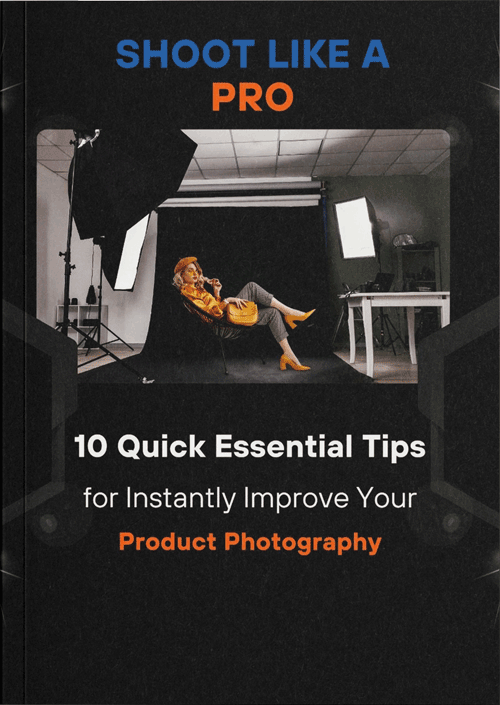When it comes to becoming an expert photographer, you must have technical skills, creativity, and a dedication to developing your skills. If you want to advance your hobbyist photography skills, this blog is the password to unlocking the secrets of professional photography. We’ll expose secrets and techniques utilized by professionals to hobbyists like you here. You’ll learn how to take your photos from basic to outstanding while also developing your artistic flair. These secrets can help you on your way to expert-level photography, whether interested in understanding the technical aspects, going into the complicated world of structure, or finding the life-changing potential of post-processing.
Here are twelve valuable tips and practices that can help you become an Expert Photographer:
Master Your Equipment: Understanding and mastering your equipment is one of the essential secrets of being an expert photographer. Whenever you use a DSLR, mirrorless camera, or even a smartphone, take the time to learn everything there is to know about your camera and its settings. To control your images completely, learn about the shutter speed, aperture, ISO, and other technical elements.
Understand Lighting: Lighting is a valuable tip for expert photographers. Expert photographers know how to observe and use light effectively to create stunning images. Learn to identify different types of light, including natural light sources like the sun and artificial lighting options like studio lights or flashes. Experiment with lighting angles, intensity, and color temperature to achieve the desired mood and atmosphere in your photos.

- The angle of light can dramatically affect the mood and look of your photographs.
- The intensity of light has an essential effect on the overall atmosphere of your photos.
- Different light sources generate light with a range of color temperatures, from warm (yellow-orange) to cold (blue).
- Working with mixed lighting is another option to consider. This involves incorporating multiple types of light sources that have different color temperatures into the arrangement you create.
Composition is Key: Composition is essential in producing beautiful and exciting photographs. It involves arranging the elements within your frame to direct the viewer’s attention and express your intended message. Compositional concepts such as the rule of thirds, leading lines, alignment, framing, and negative space should be learned and practised. Understanding and employing these approaches will assist you in creating well-balanced and engaging compositions.
Master the Exposure Triangle: The exposure triangle is made up of three components: aperture, shutter speed, and ISO. Understanding how these three variables interact and affect image exposure is essential for achieving the desired results. The depth of field is controlled by the aperture, the shutter speed by the shutter speed, and the ISO by the camera’s sensitivity to light. Experiment with different combinations of variables to achieve the appropriate exposure and creative effects in your images.

- Mastering ISO: ISO determines the camera’s sensitivity to light. Professionals know how to choose the right ISO setting for each situation. In low-light conditions, they increase the ISO to capture well-exposed images without sacrificing image quality. However, they also aim to keep the ISO as low as possible to minimize noise and maintain image sharpness.
- Experiment with Shutter Speed: Shutter speed controls the duration of the exposure, and professionals know how to leverage it to their advantage. They experiment with different shutter speeds to achieve specific effects.
- Aperture Control: The aperture of a lens refers to the size of the opening through which light passes. Professionals understand how to change the depth of the frame by adjusting the aperture. They can generate a shallow depth of field by employing a wide aperture (small f-number), blurring the backdrop, and attracting attention to the subject. A small aperture (high f-number) on the other hand enhances the depth of field, keeping both the subject and background in focus.
Harness the Power of Post-processing: Photography post-processing is an essential tool in the expert photographer’s toolkit. Once you’ve captured your images, use editing software such as Adobe Photoshop or Lightroom to enhance them further. Learn basic adjustments like exposure, contrast, white balance, saturation, and advanced methods like dodge and burning, or selective editing. However, remember to use post-processing to enhance your photos rather than rescue poorly captured images.
Study the Masters: To become an expert photographer, study the work of famous photographers who inspire you. Analyze their compositions, lighting techniques, use of color, and storytelling abilities. This study will help you gain insights into their creative choices and expand your visual language. Explore various genres and styles to broaden your perspective and develop your unique photographic voice.
Embrace Regular Practice: Practice is essential to improving your photographic skills. Make it a habit to carry your camera wherever you go and photograph various objects. Experiment with various settings, compositions, and lighting situations. Shoot in difficult settings, such as low light or fast-moving subjects. Regular practice will allow you to hone your technical skills, develop your creative vision, and create a varied portfolio.
Develop Your Unique Style: While studying the work of others is essential, you must try to build your photographic style. Your style should reflect your personality, passions, and vision for creativity. Experiment with various styles and subject matters to discover what speaks to you. You will naturally gravitate toward specific techniques, aesthetics, or subject topics that characterize your style as you gain experience.
Pay Attention to Details: Attention to detail is a secret weapon of expert photographers. Train yourself to notice the small elements that can make or break a photograph. Pay attention to distracting elements in the frame, unwanted reflections, or elements that may appear out of place. Be mindful of the background and foreground elements that can enhance or detract from your subject. By paying attention to details, you can ensure that your images are visually pleasing and free from distractions.

Seek Feedback and Learn from it: constructive feedback is essential for an expert photographer. Share your work with other photographers, join photography communities, or take part in remarks sessions. Constructive criticism can help you identify areas for improvement, gain new views, and refine your photographic skills. Be open to comments since they allow you to grow, change, and push your creative limitations.
Develop Patience and Persistence: Becoming an expert photographer takes time and dedication. It requires patience to wait for the perfect moment, the right lighting conditions, or the ideal subject. When faced with difficulties or disappointments, persistence is essential. Accept failure as a learning opportunity and keep moving forward. Your talents and artistic vision will develop with time, patience, and determination.
Stay Curious and Keep Learning: Photography is a continuously evolving field, and there is always something new to learn. Stay curious and open-minded, and don’t be afraid to explore new ideas, techniques, and equipment. Attend workshops, watch online tutorials, study books, and interact with other photographers to stay up to date on the newest trends and developments. Continuous learning and experimentation will keep your photography unique and fascinating.
We have pointed out some tips for becoming an expert photographer. You can apply them to your progress.
Simple Backgrounds: Expert photographers pay special attention to the background of their photographs. They try for simplicity, using simple backgrounds to keep the viewer’s attention on the subject. They make more visually affecting and compelling images by removing distractions.
Avoid Camera Shake: Camera shake can ruin an otherwise amazing photo. Expert photographers employ various kinds of strategies to reduce camera shake, such as using tripods or monopods, supporting themselves against a level surface, or applying image stabilization equipment. They offer cleaner and more clear photographs because they reduce camera shake.
Create Motion using Panning: Panning is a photography technique that involves following a moving subject with the camera and capturing it in great focus while blurring the backgrounds. Panning is used by expert photographers to create a sense of motion and energy in their shots, resulting in dynamic and attractive images.
Conclusion
To become an expert photographer, you must have an equal amount of technical knowledge, creativity, practice, and a willingness to learn and improve on a regular basis. Mastering your equipment, knowing composition and lighting, and having your own distinct style are just some secrets to becoming an expert photographer. Accept these secrets, practice consistently, seek feedback, and, most importantly, enjoy capturing moments and sharing stories with your camera.


